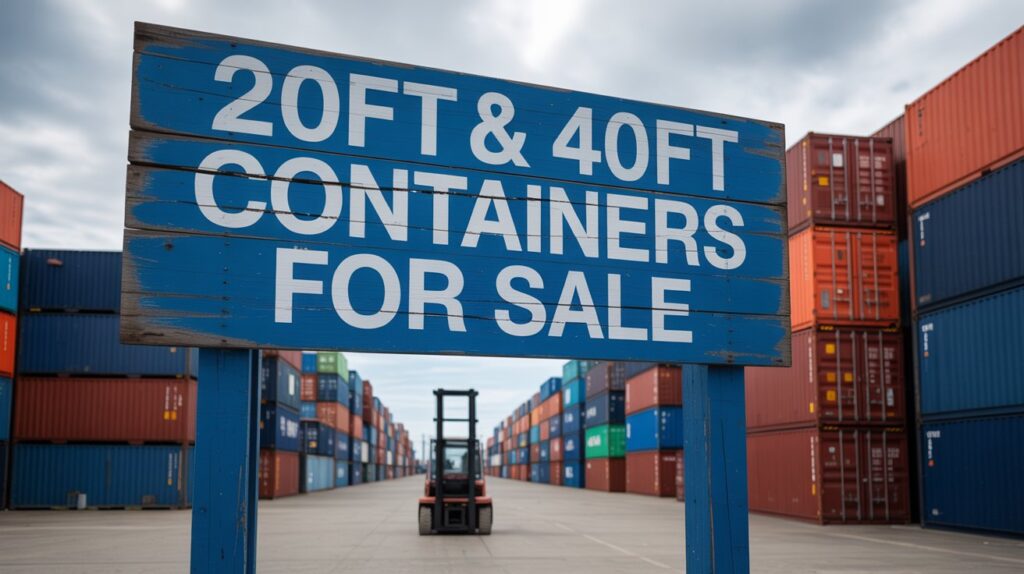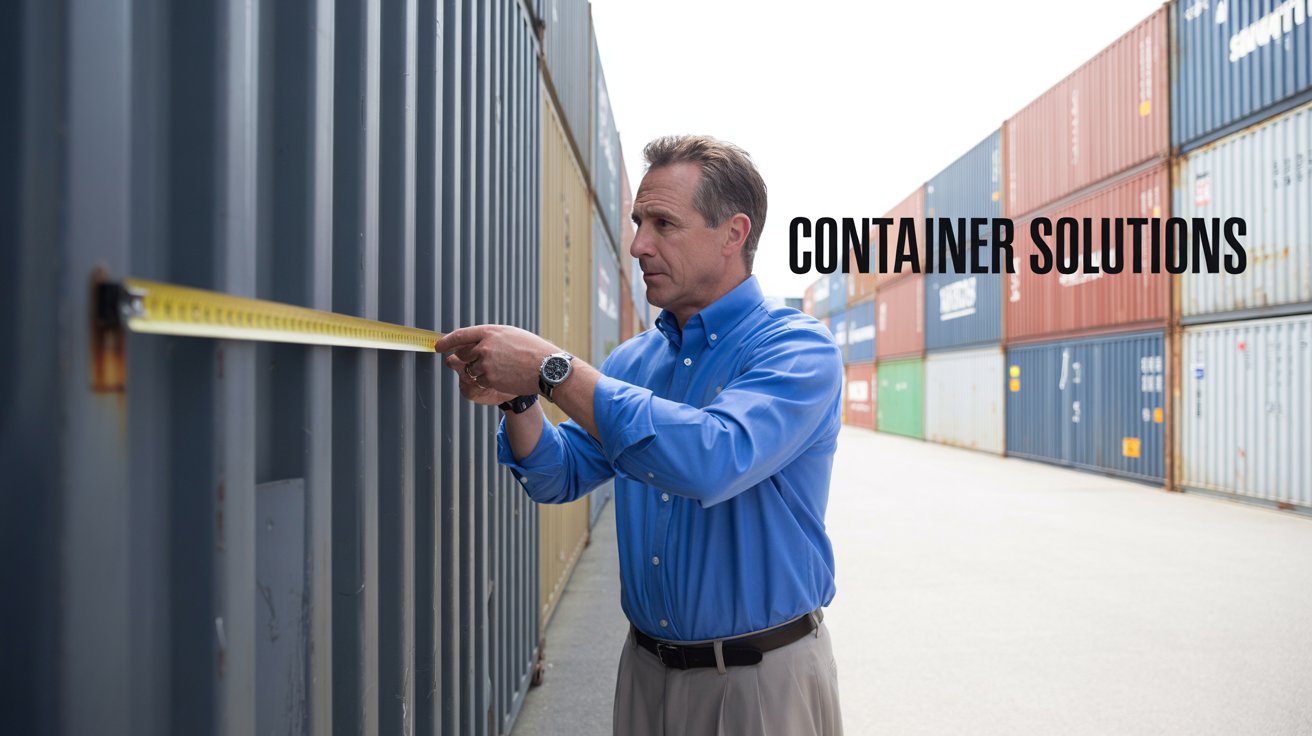Shipping containers keep global trade moving, but did you know they come in standard sizes for easy transport? From compact 20-footers to spacious 40-foot high cubes, each size serves a unique purpose. Here’s a quick guide to the most common dimensions and how they streamline logistics worldwide.
Introduction to Shipping Containers
Shipping containers are large, reusable steel boxes designed for intermodal freight transport. This simply means they can be easily transferred from one mode of transportation to another — ships, trains, and trucks — without the need to unload and reload their contents. They’re an essential aspect of international trade, providing a standardized form of packaging that ensures safety, efficiency, and reliability in the shipping process.
Importance of Standardization
Before the advent of shipping containers, goods were loaded and unloaded manually, which was time-consuming and labor-intensive. The introduction of standardized shipping containers transformed this process, enabling quicker, more efficient handling, and reducing transportation costs. Standardization means that these containers can be uniformly stacked and fitted on ships, rail cars, and trucks.
Standard Sizes of Shipping Containers
Understanding the standard sizes of shipping containers is crucial for anyone involved in logistics or shipping. Common sizes contribute to ease of use and flexibility in transportation and are central to planning any shipment.
International Organization for Standardization (ISO) Standards
The International Organization for Standardization (ISO) provides global standards for shipping containers, ensuring they meet specific dimensions and capacities. This uniformity allows diverse entities across different countries and industries to work seamlessly together. Let’s explore the most common standard container sizes you’ll encounter.
20-Foot Containers
The 20-foot container, often referred to as a Twenty-foot Equivalent Unit (TEU), is one of the most recognized sizes in global shipping. This container is versatile and cost-efficient for transporting products over vast distances.
- External Dimensions: 20 feet long, 8 feet wide, and 8.5 feet high
- Internal Dimensions: Approximately 19.4 feet long, 7.8 feet wide, and 7.9 feet high
- Volume: About 1,170 cubic feet
- Weight Capacity: Generally holds up to 27,600 kilograms (61,200 pounds)
40-Foot Containers
The 40-foot container, or two TEUs, is another staple in the shipping industry. Due to its size and efficiency, it is ideal for transporting large volumes of products or bulky items.
- External Dimensions: 40 feet long, 8 feet wide, and 8.5 feet high
- Internal Dimensions: Approximately 39.5 feet long, 7.8 feet wide, and 7.9 feet high
- Volume: About 2,390 cubic feet
- Weight Capacity: Can usually carry up to 26,500 kilograms (58,400 pounds)
High-Cube Containers
High-cube containers are similar to standard containers but offer an extra foot of height, making them ideal for bulky, lightweight cargo that requires extra volume but not additional weight capacity.
- External Dimensions: 40 feet long, 8 feet wide, and 9.5 feet high
- Internal Dimensions: Slightly more than 39.5 feet long, 7.8 feet wide, and 8.9 feet high
- Volume: Approximately 2,694 cubic feet
- Weight Capacity: Similar to 40-foot standard containers, typically handles up to 26,500 kilograms (58,400 pounds)
45-Foot Containers
These containers offer additional length and are often used for goods requiring extra space.
- External Dimensions: 45 feet long, 8 feet wide, and 9.5 feet high
- Internal Dimensions: Approximately 44.3 feet long, 7.8 feet wide, and 8.9 feet high
- Volume: Around 3,173 cubic feet
- Weight Capacity: Can usually support up to 29,500 kilograms (65,000 pounds)
Other Specialized Containers
While the above sizes are the most common, there are also specialized containers designed for specific needs, such as Refrigerated Containers (Reefer Containers) and Open-Top Containers.
Reefer Containers
These containers are equipped with temperature control to transport perishable goods such as food, pharmaceuticals, or anything requiring a controlled climate.
- Common Sizes: Usually 20-foot or 40-foot
- Temperature Range: Can be set anywhere from -65°C to 40°C
Open-Top Containers
Ideal for bulky cargo that needs to be loaded from above, these containers come without a rigid roof and instead use a removable tarpaulin.
- Common Sizes: 20-foot and 40-foot
- Benefits: Flexible for oversized cargo that doesn’t fit through standard doorways

Why Container Size Matters
Understanding the right size of container to use is crucial for efficiency, cost-effectiveness, and safety. Here are some key reasons why container size is important:
- Logistics Planning: Choosing the correct container size can impact how goods are packed, the number of containers required, and ultimately, the transportation costs.
- Optimization of Space: Efficient use of space can reduce the number of shipments needed, which can significantly cut costs.
- Ensuring Safety: Using appropriately sized containers prevents overloading, reducing the risk of damage to products and accidents during transportation.
- Regulatory Compliance: Certain sizes are required for specific types of goods or in certain jurisdictions, ensuring international compliance and avoiding legal issues.
Considerations for Choosing the Right Container
Selecting the right container size involves considering several factors:
Nature of Goods
Evaluate the type of goods you’re shipping. Bulky or irregularly shaped goods might require a 40-foot high-cube or an open-top container.
Volume and Weight
Estimate the volume and weight of your shipment. While a 20-foot container is suitable for heavier goods, a 40-foot container might be better for larger or lighter products.
Transportation Cost
Analyze the cost implications. Smaller containers might be cheaper per unit, but fewer larger containers could be more economically efficient for certain cargoes.
Route and Destination
Consider the transportation route and final destination. Some ports or shipping routes have limitations on container sizes they can accommodate.
Trends in Container Shipping
Container shipping is a constantly evolving industry, driven by technological advancements and shifts in global trade. Here are some trends and innovations worth noting:
Digitalization
The implementation of digital technologies in container tracking and management is enhancing supply chain transparency and efficiency. Real-time tracking and automated processes are becoming standard practice.
Sustainability
As environmental awareness grows, the industry is focusing on sustainable practices. This includes developing eco-friendly ships and creating efficiencies through container standardization.
Expansion of Panamax and Post-Panamax
The size of ships and, consequently, the containers they carry is increasing. The expansion of the Panama Canal in 2016 facilitated larger ships, known as New Panamax, influencing the design and utilization of shipping containers.
Future Projections and Innovations
The future of shipping containers will likely see further innovation and changes in standards to accommodate global economic shifts and environmental concerns.
Smart Containers
Integration of IoT (Internet of Things) technologies is making containers “smart,” allowing them to monitor internal conditions, report damage, or predict maintenance needs.
Modular Containers
Flexibility in container design, where containers can be adjusted in size and shape, is a potential future innovation aimed at optimizing space and efficiency.
Autonomous Shipping
Increasing autonomy in shipping could change the logistics landscape. Automated ships, alongside smart containers, could revolutionize how freight is transported.
Conclusion
In understanding the standard sizes of shipping containers, you’re delving into a fundamental aspect of global trade and logistics. These standardized units have made international shipping more efficient and reliable, but choosing the right size and type is key to optimizing logistics operations. Whether you’re a business owner considering the most cost-effective way to ship goods or an enthusiast curious about where the future of container shipping lies, knowing these details offers a comprehensive understanding of modern transportation’s backbone.

